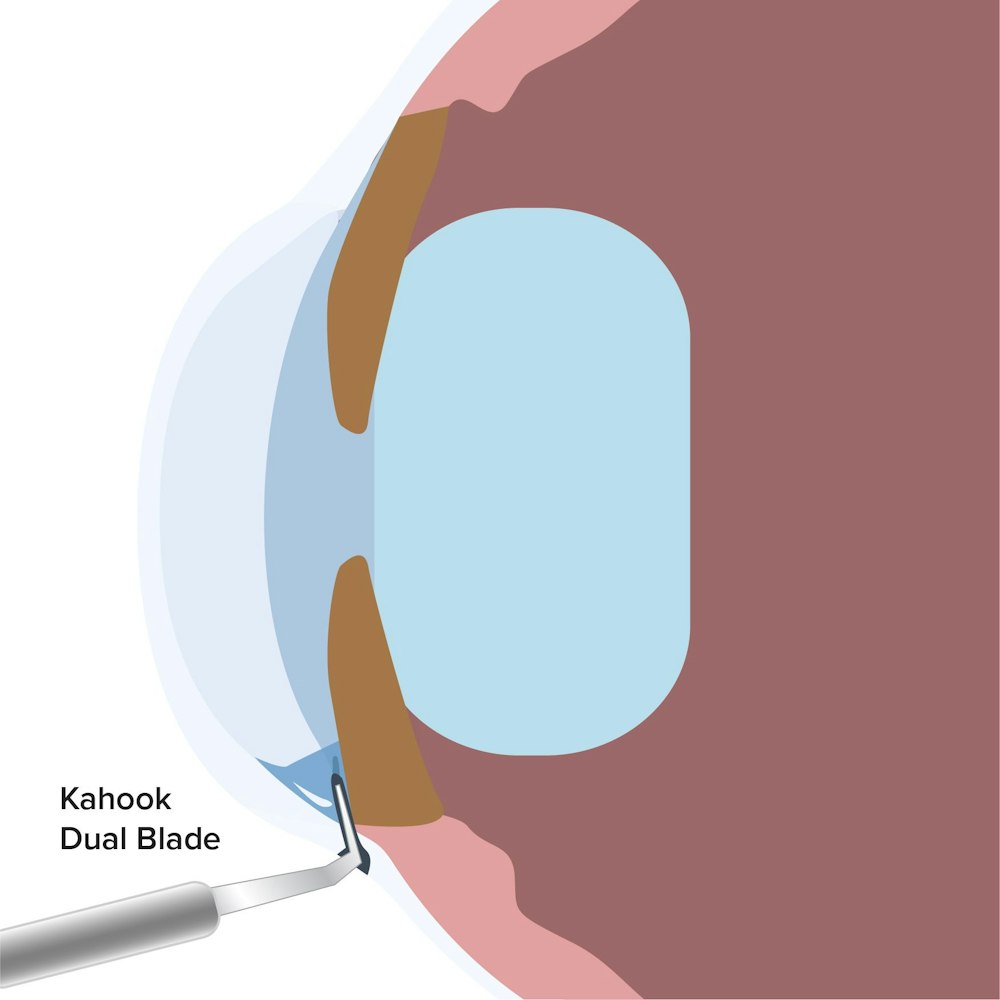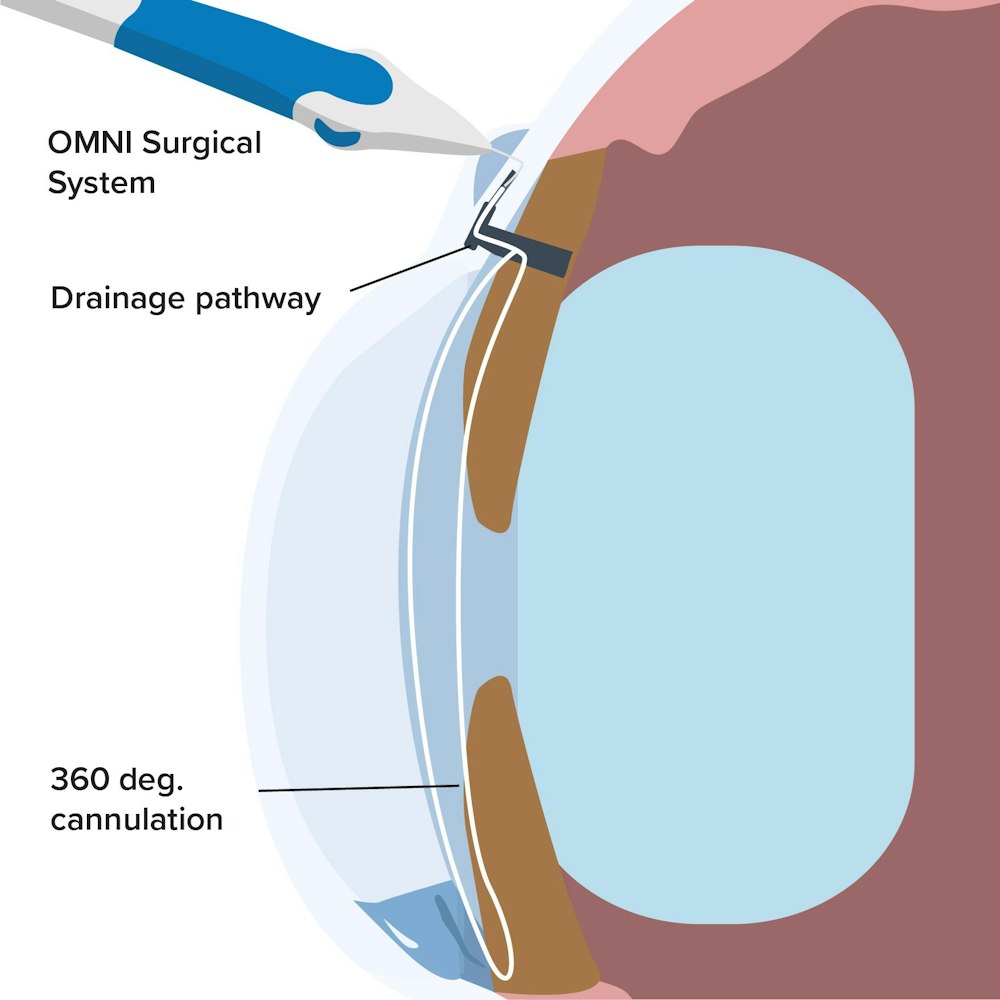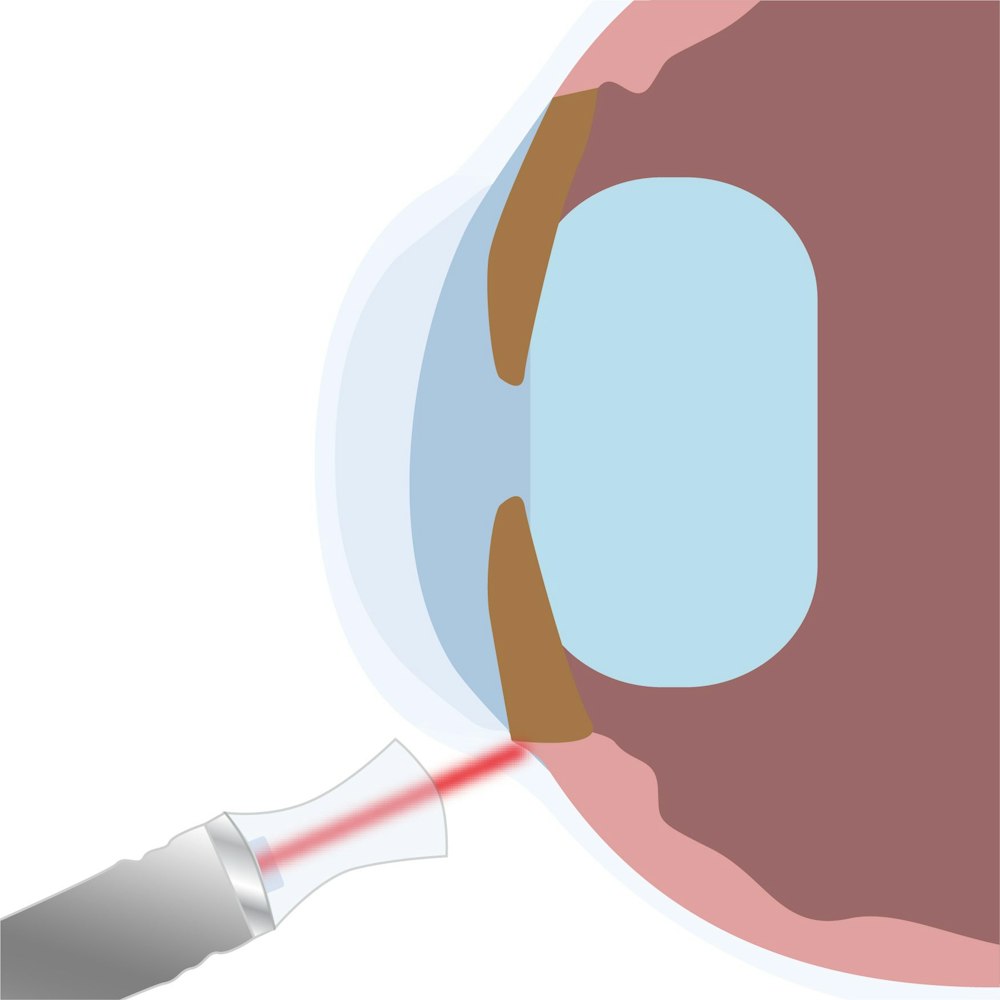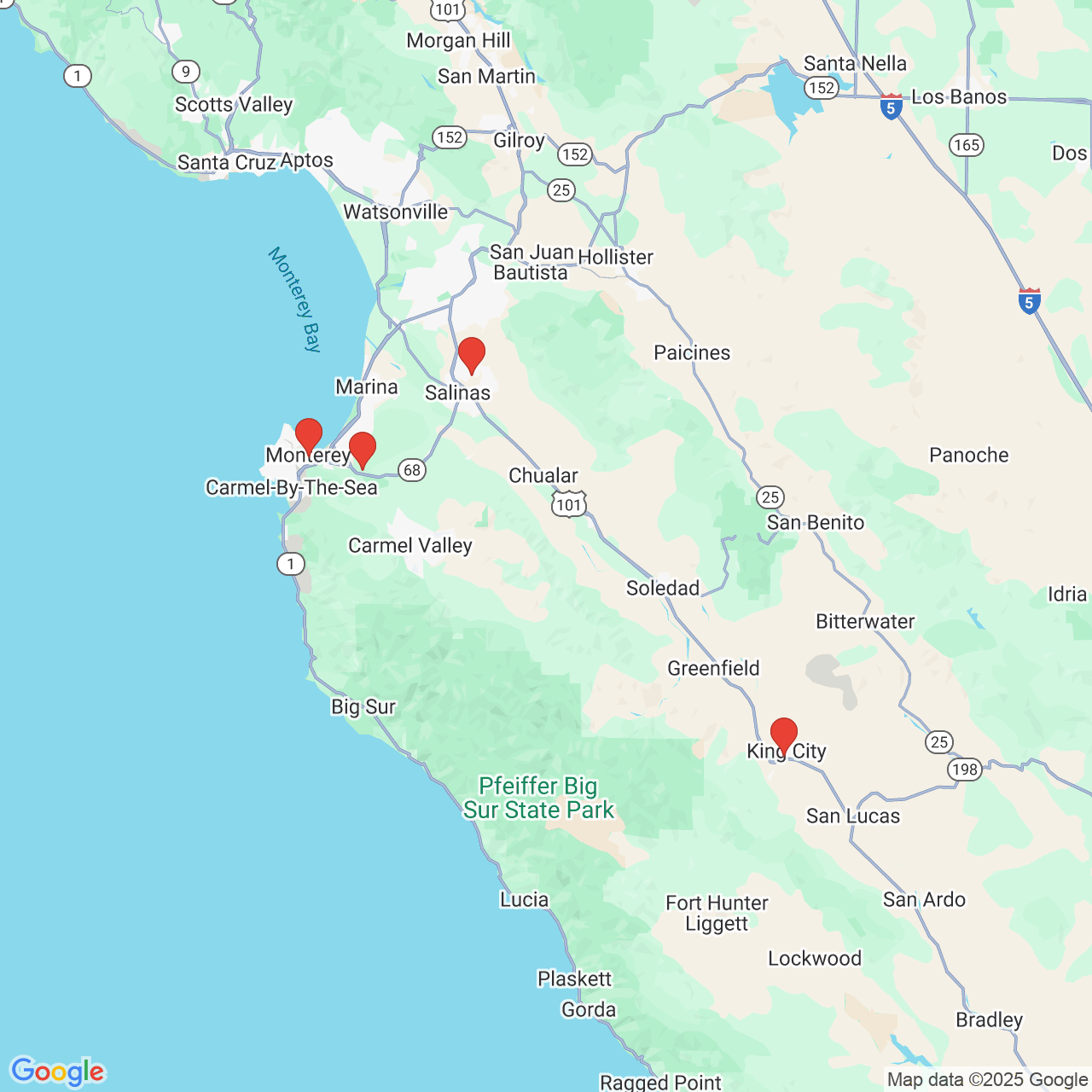Glaucoma
Glaucoma refers to a group of conditions that damage the optic nerve, causing irreversible vision loss.
The medical doctors at Monterey County Eye Associates offer many glaucoma treatments to preserve your vision and prevent blindness.
Learn why people in the Monterey, Salinas, and King City, CA, area trust our doctors with their vision.
The Two Common Types of Glaucoma
Most types of glaucoma involve increased pressure within the eye (intraocular pressure). These are the two most common types of the condition.
Open-Angle Glaucoma
The most common form of the eye disease, open-angle glaucoma comprises approximately 90 percent of all diagnoses. It's caused by the slow clogging of the drainage canals in the eye, increasing intraocular pressure. The angle between the iris and cornea are open and wide.
Angle-Closure Glaucoma
In angle-closure glaucoma, a patient experiences blocked drainage canals but has a narrow angle between the iris and cornea. While not as common as open-angle glaucoma, the signs and symptoms of angle-closure glaucoma are much easier for people to notice.
Other Forms of the Condition
/
In addition to open-angle and angle-closure glaucoma, other kinds include congenital (childhood) glaucoma, normal-tension glaucoma (NTG), and pigmentary glaucoma.
Common Symptoms Protect Your Vision by Knowing the Warning Signs

Different types of glaucoma have different symptoms. Keep in mind that you may not notice any symptoms until you've experienced significant vision loss. This is why it's important to schedule regular eye exams.
Open-Angle Glaucoma Symptoms
- Blind spots in central or peripheral vision
- Tunnel vision, especially in advanced stages
Angle-Closure Glaucoma Symptoms
- Blurry vision
- Red eyes
- Eye pain
- Headaches
- Nausea
- Vomiting
Risk Factors
/
- Being 60 years old or older
- African, Asian, or Hispanic descent
- Family history of the condition
- Extreme myopia or hyperopia
- Thin corneas
- Previous eye injury or surgery
- Medical conditions (diabetes, sickle cell anemia)
- Long-term use of corticosteroids
Acute Angle-Closure Glaucoma is an Emergency
Acute angle-closure glaucoma is a sudden and severe increase in intraocular pressure. This can cause optic nerve damage. Optic nerve damage is irreversible and could lead to blindness. If you have sudden and severe onset of angle-closure symptoms, such as those listed above, seek treatment immediately to prevent permanent damage to your vision.
Request an Eye Exam Now
If you are experiencing sight loss, vision obstruction, eye pain, or headaches you may be suffering from the group of eye conditions known as glaucoma. Glaucoma is often caused by intense eye pressure. Untreated eye pressure can destroy your optic nerve, causing vision loss and blindness.
At an eye exam, our ophthalmology experts can determine if you do have glaucoma and begin providing the eye care you need. Time is of the essence. Call (831) 424-1150 or write to us to request your eye exam now.
"The practice is efficient, modern and convenient. Staff are helpful, concerned and professional. Dr. Rosenblum is very patient, knowledgeable and thorough. I highly recommend the practice for quality eye care."
Steve Ricks

Medicare Covers Glaucoma Tests
If you are in a high-risk group, Medicare will cover one glaucoma test per year. The CDC recommends that even those who are not in high-risk groups receive a comprehensive eye exam before they turn 40. Glaucoma typically begins with few symptoms and may even occur in people with normal amounts of eye pressure. Detecting glaucoma now can save your vision decades into the future.
How Much Does Treatment Cost? Pricing and Insurance
The cost of treatment will vary from patient to patient depending on their needs. Less invasive procedures will typically cost less than glaucoma surgery and other more invasive therapies. Medical insurance will typically cover glaucoma treatments. During your consultation at our practice in Monterey County, CA, we can go over pricing, your insurance coverage, and financing plans in greater detail.
Are You at Risk for Glaucoma? Contact Our Ophthalmologists in Monterey County, CA
If you have experienced any of the warning signs we've noted above, it's important that you schedule a consultation with our ophthalmologists. We offer some of the most sophisticated vision technology at our ophthalmology offices in Monterey, Salinas, and King City.
To learn more about preventing vision loss, contact our eye doctors online. You can also schedule an appointment by phone.
Call Monterey County Eye Associates
(831) 424-1150

We Make Monterey Happy
"Dr. Rosenblum is a very caring and kind doctor who takes the time to listen to my questions and provides very good information about my eye health. Other support staff are equally kind and responsive to my needs." Stuart Harman
Examination and Diagnosis

Testing Methods
In addition to a discussion of your symptoms and medical history, common tests performed during an exam may include:
- Tachymetry
- Gonioscopy
- Optic nerve photographs
- Optical coherence tomography
- Visual fields testing
Creating a Treatment Plan
During your visit to our ophthalmology offices in Monterey County, CA, we will develop an individualized treatment plan. This will take into account the type of glaucoma you have and the most sensible procedure or combination of procedures that can help preserve your vision and manage the disease.
What Exactly Is a Visual Fields Test?
There are various types of visual field tests. What they all have in common is that they measure your peripheral vision and the sensitivity of various parts of your sight. Our ophthalmologists will identify the best test for you depending on your personal situation.
While our doctors use advanced technology to evaluate the results of your test, what you have to do is very easy. You simply look straight ahead and signal when you see a light or object in your peripheral vision. Completing this test helps our team determine if you have glaucoma and what the best course of action is.
While glaucoma cannot be cured, there are many options available to preserve your vision and prevent blindness.
Podemos Ayudarte
Over 10 million Californians speak Spanish. It is only natural that we have fluent Spanish-speaking staff at each of our locations. This allows us to better serve the Monterey community. Whether you or your family must speak to us in Spanish or simply prefer to, we are ready to help you. Call (831) 424-1150 or write to us to request an appointment.
What Is a Stent? The Role Stents Play in Glaucoma Surgery
How Do Stents Work?
A stent is a small tube that can be inserted into a passageway in the body to keep that passage open. The stents placed during MIGS are very small. While often placed during cataract removal, stents can be inserted whether or not a patient has cataracts.
Different Kinds of Stents Can Be Used
Our offices in Monterey County, CA, can use a variety of stents depending on the patient's needs, including the iStent, the Hydrus® Microstent, and the XEN® Gel Stent.

Non-Surgical Treatments
Prescription Medication
Prescription eye drops or oral medications are a common first step in treatment. Prostaglandins, beta blockers, alpha-adrenergic agonists, and other drugs reduce intraocular pressure by reducing the production of aqueous humor and/or improving the flow of the fluid within the eye.Selective Laser Trabeculoplasty (SLT)
SLT is a type of laser therapy that targets the trabecular meshwork, the natural drain for fluid within the eye. During SLT, the trabecular meshwork is exposed to laser energy. SLT is ideal for patients who experience open-angle glaucoma and can be combined with the use of medications.Micropulse Laser Trabeculoplasty (MLT)
Micropulse laser trabeculoplasty is similar to SLT in a number of ways. Both are laser therapies for patients with open-angle glaucoma. However, MLT uses much shorter pulses of laser energy that are just microseconds long, offering a much gentler form of treatment.Important Eye Drop Information
Our doctors will likely prescribe special eye drops to treat your glaucoma. These reduce eye pressure, which helps ease the stress on your optic nerve. While they do not cure glaucoma, these eye drops are key to keeping it from getting worse.
Since they do not restore vision, some patients become frustrated and stop using their eye drops. You must continue using your eye drops as prescribed to prevent your vision from worsening. Failing to do so will unblock eye pressure, harming your optic nerve and increasing your risk of blindness.
Take Your Eye Health
Into Your Hands
Seeing our ophthalmologists now is the best way to protect your vision later. No patient regrets preventing life-long vision loss. Our California team of experts has a deep understanding of all causes of and treatments for glaucoma, and can help preserve your vision.
At Monterey County Eye Associates, your optic nerve will receive the optimal care you need. Request your eye exam now by calling (831) 424-1150 or by writing to us.
Another Grateful Review From a Monterey, CA, Local
"Excellent exam, very thorough. I highly recommend the Monterey Bay Eye Center."
gymrat E, 5-Star Review
Living With Glaucoma Helping Patients with Long-Term Management
There's a lot you can do to lead a fulfilling and enriching life in spite of this progressive eye disease.

Schedule Frequent Vision Checkups
People diagnosed with or at risk for glaucoma should consider visiting an eye doctor more frequently. This may mean annual or biannual trips to see an eye care specialist. Repeated visual field tests allow us to ensure glaucoma treatment is working.
Healthy Lifestyle Choices
Good general wellness can make a difference when it comes to your vision. Be sure to eat a well-balanced diet, exercise regularly, and see your doctor for your annual physical.
Talk with Your Loved Ones
If you need emotional support, speak with your family, friends, and support network about what you're feeling. You can also reach out to our eye doctors for advice and assistance.
"Appointment was on time. Everything was explained well. Dr. Hustead is experienced and knowledgeable. I highly recommend the Monterey Bay Eye Center."
Michael Dove







